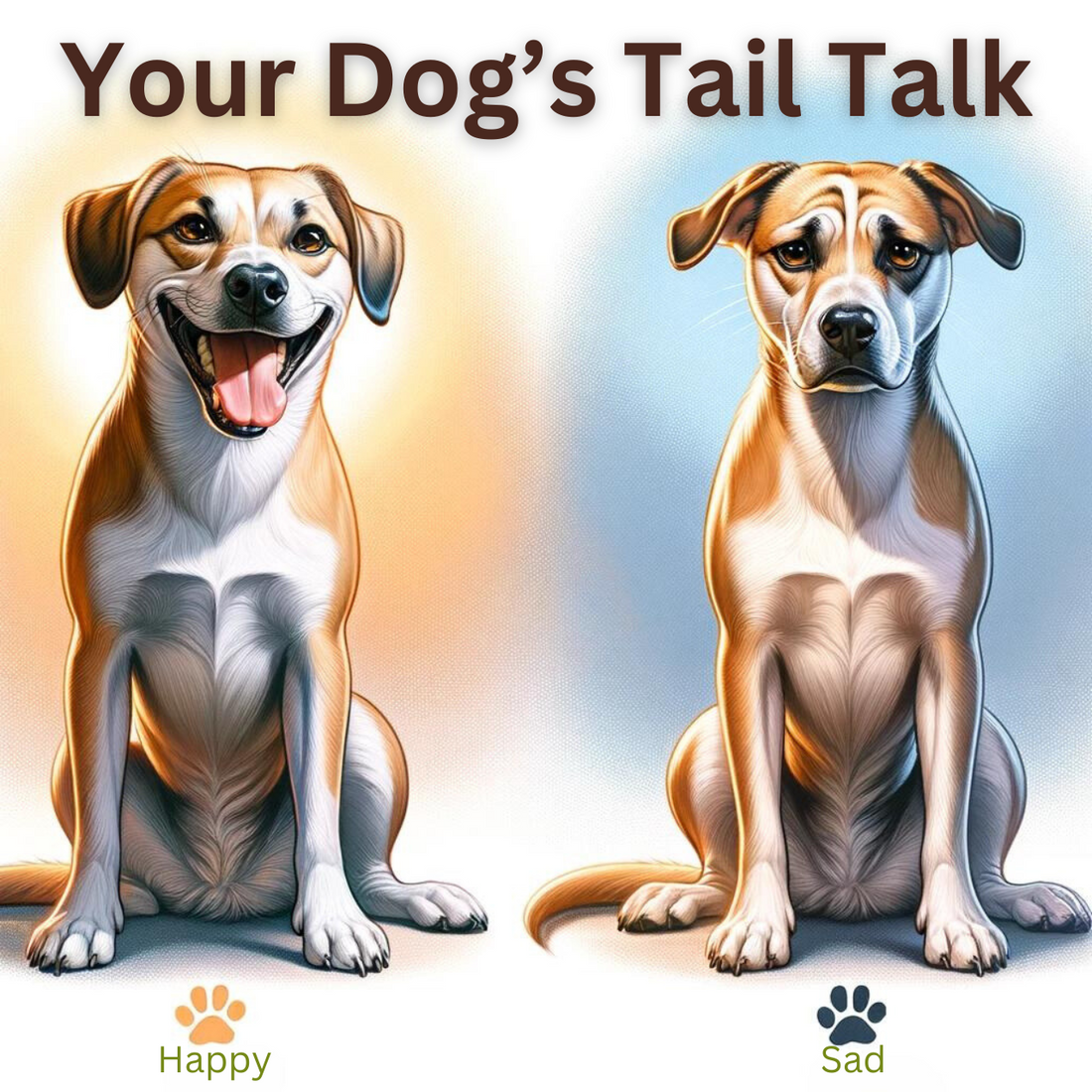Your furry friend has a personality. She has traits and nuances that are unique to her and they make her the dog that she is. Learning to read her communication signals is important, not only for a loving and caring relationship but for her health and well-being as well.
Dogs are known for their expressive nature. They communicate through a unique blend of vocalizations, body postures, and behaviors. Understanding these signals may take a little time, but will only further the bond you have with her... allowing her to express her needs and you to notice when something is off with her.
Come along as we delve into the nuances of dog body language, helping you distinguish between a happy dog, a sad dog, and signs that may indicate issues related to her health.
Happy Dog: Signs of Joy and Contentment

A happy dog is pretty hard to miss... happiness is contagious!
A happy dog displays a variety of clear, joyful signs. Look for a relaxed body posture, with a wagging tail held at a mid-level. Ears are typically in a natural position, neither pinned back nor perked up aggressively. A happy dog often has a "soft" gaze and a slightly open mouth, resembling a smile. The "play bow" is another unmistakable gesture of a joyful dog, where the front legs are spread flat on the ground while the back side remains up, inviting play.
Sad Dog: Understanding Discomfort and Sadness

Recognizing a sad or uncomfortable dog is vital for addressing her needs and ensuring her health. Signs of a sad dog include lowered ears, a tucked tail, and reduced energy. A dog may also show a lack of interest in activities they usually enjoy, such as playing or walking. Physical signs, such as excessive licking or paw chewing, can indicate discomfort or health issues, signaling the need for a vet visit.
Dog Health: Body Language Signs of Illness or Pain.

Body language can also alert owners to potential health issues. A dog in pain may exhibit increased aggression, yelping, or withdrawal from touch. Changes in her posture, such as hunching or reluctance to move, are red flags. Additionally, excessive drooling, panting, or changes in eye appearance could indicate underlying health concerns. Early detection and intervention are crucial for managing health issues effectively for your dog.
CONCLUSION
Understanding your dog's body language is a key aspect of pet care, fostering a deeper connection between you and your canine companion. By paying close attention to the signs of a happy, sad, or unwell dog, you can ensure her health and happiness. Remember, when in doubt about your dog's health or behavior, consulting a veterinarian is always the best course of action.
If you would like to give CBD a try to help your dog live a healthier, happier, and calmer life, please consider us. Mellow Mammals is a family-owned and veteran-led business that is focused on safety and creating products that outperform other pet CBD brands.
Learn more and order a bottle today at: www.mellowmammals.com

